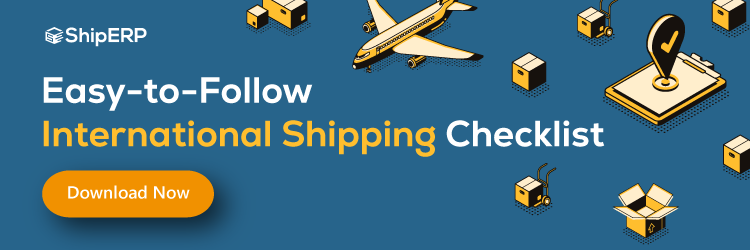
5 Tips on How to Navigate International Shipping
When your company does business outside of its borders, there are plenty of complexities that can seem challenging, like the language and currency. However, shipping internationally doesn’t have to be so complex with these helpful tips.
It’s great to have people from all around the world who want to buy your product. But are you prepared to ship it while complying with various regulations? For example, the major difference between shipping domestically and internationally is customs.
If your business is ready to take shipping to the international level, we have some tips for you to keep in mind as you navigate this new playing field.
Understand the International Shipping Process
The first step in shipping internationally successfully is understanding how it works, specifically customs. Customs play a huge role in international shipping. They are there to protect its country’s citizens from potential security threats, health hazards, and counterfeit goods.
Custom procedures can change often, and each product has its own set of rules. Compliance procedures apply to all countries, who each have different rules. As you can tell, there is no universal rule when it comes to procedures, so your business must be aware of the differences when you venture into shipping with various countries.
Aside from understanding what you can and can’t ship, your business should have a brief knowledge on what the customs clearance process is, which are as follows:
- The customs agent inspects the package and its relevant documents.
- The customs agent will review the document and verify prices.
- If the value of the package is above the minimum, then duties and tariffs will be applied and charged.
- If the package shipped DDP (Delivered Duty Paid), then it will be released. If it’s shipped DDU (Delivered Duty Unpaid, it will be held until the receiver has been contacted and submitted payment.
Provide Accurate and Correct Documentation
Have you ever incurred any delay because of inaccurate shipment information? Yikes!
You want to make sure that your shipments can move through customs in any country by giving customs with accurate and complete documents. The efficiency of the international shipping process is through correct information. Having full details of the shipments will help the customs agent do their job quickly with little to no delays.
When shipping from the U.S., the form you will use most often is the Commercial Invoice which contains important information about the shipment, the receiver, and the sender. In some cases, you will need to provide supporting documents, like the Electronic Export Information (EEI) and/or the Certificate of Origin.
Our SAP-integrated solution ShipERP fulfills all your compliance shipping needs with ShipAES. Our Automated Export Systems solution gives your business the ability to automate the filing of export information during the shipping process. ShipAES validates at a delivery or shipment level to ensure the export compliance.
Want to know how to fill out international shipping forms? Check out our guide here.
Calculate Duties and Tariffs
When you’re offering products to be shipped internationally, it is critically important to know how each of those products are identified and what related costs are. The governing customs office calculates duties and taxes involving the following:
- Product’s declared value and shipping costs
- Product category determined by HTS Code
- Country/Region of origin
- Destination country/region’s tariff rates
- Applicable trade treaties
Luckily, you can use online calculators to determine duties and tariffs, like SimplyDuty.

Communicate with Your Customers
One of the challenges for businesses is handling duties and tariffs so that the customers are happy (and hopefully purchase again). The best approach to this challenge is to be transparent and communicate clearly.
Depending on how the necessary costs will be paid, you will have to explain to your customer what the general breakdown is, and if you’ll be handling the costs on the customer’s behalf or if it’s the customer’s responsibility for the duties and taxes.
Sometimes cheaper isn’t always better. The shipment can get lost in transit and cost both the customer and the business time and money to redo the whole process. Consider using a tracking service to provide both parties with the comfort of knowing where it is. Although tracking can cost more, it will be cheaper than re-shipping the product and/or dealing with unhappy customers.
Know Who to Turn to for Expert A
dvice
It’s not just enough to have a good grasp on all this knowledge on navigating international shipping. Issues can arise and we can’t quite prepare for that, but you can turn to great resources for all your questions.
- U.S. Commercial Service published A Basic Guide to Exporting which provides an overview of exporting and discusses the different channels to consider when trading cross-borders
- Websites of the border agencies for the countries you’re shipping to
- Shipping providers knowledgeable in international shipping
It’s exciting to expand your business into shipping globally. The best way to avoid any shipping delays and to satisfy your customers is to be prepared.
Are you ready to understand the international shipping process, provide correct documentation, accurately calculate duties and tariffs, communicate with your customers, and seek out expert advice to take your business global?
Take a look at our compliance solutions for opportunities to untangle the complexities of government guidelines.




